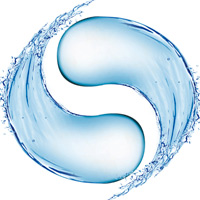 After abandoning fat restriction and food guide advice for body fat reduction (see my first diet article), I looked for a new approach.
After abandoning fat restriction and food guide advice for body fat reduction (see my first diet article), I looked for a new approach.I decided the next step was expert advice, so I met with a nutritionist from my health club. She had me record what I ate for a week then, using the record as a reference, we discussed a personalized strategy. The key points were:
- eat breakfast
- eat 5-6 times per day
- drink 2-3 L water/day
- always eat protein with your carbs
- avoid "white carbs" (flour, rice, potatoes, sugar, etc.)
- fats are bad
At the time I only ate lunch and dinner. Eating when I got up took willpower for the first few weeks, as did the effort to snack after the big meals. After a month or so though I didn't need to force myself to eat. After another month I got hungry as meal time approached, which was weird. I'd never understood why some people needed to eat at specific times, but now I was one of them.
That hunger was a good sign. Eating this way geared my metabolism to expect frequent calories, so the food I ate was burned right away, rather than being stored as fat.
That hunger was a good sign. Eating this way geared my metabolism to expect frequent calories, so the food I ate was burned right away, rather than being stored as fat.
Drinking 2 L of water every day required an adjustment too. Reaching a water consumption of 2 L water/day requires a pint with each meal and a cup with snacks. I felt like a participant in Monty Python's Marathon for Incontinents and I eventually shifted away from that to the strategy I presented in my hydration article. The biggest impact from forcing myself to drink 2 L of water/day was that it eliminated sugary drinks from my diet, which is a good way to establish a caloric deficit and hence, fat loss.
Take a look at ready to drink iced tea and water. There's 85 kcal of energy in an iced tea can and 0 kcal in water. Fat has 7700 kcal/kg (3500 kcal/lb). If you replace three iced tea cans per day with water for a month, you'll lose around a kilogram (2.2 pounds) of fat. I've found I don't miss sugary drinks much, so drinking water instead is a good flavour versus fat loss bargain.
Eating protein with carbs was pretty easy except for breakfast. Taking time to eat breakfast at all was a challenge and I tended to eat quick toast or cereal breakfasts rather than cooking up eggs, bacon, etc. I eventually settled on mixing whey protein into my milk and pouring that over cereal.
Take a look at ready to drink iced tea and water. There's 85 kcal of energy in an iced tea can and 0 kcal in water. Fat has 7700 kcal/kg (3500 kcal/lb). If you replace three iced tea cans per day with water for a month, you'll lose around a kilogram (2.2 pounds) of fat. I've found I don't miss sugary drinks much, so drinking water instead is a good flavour versus fat loss bargain.
Eating protein with carbs was pretty easy except for breakfast. Taking time to eat breakfast at all was a challenge and I tended to eat quick toast or cereal breakfasts rather than cooking up eggs, bacon, etc. I eventually settled on mixing whey protein into my milk and pouring that over cereal.
The no white carbs rule definitely hurt. No rice, pasta, bread, cereal, potatoes ... I found myself eating plain lettuce with skinless chicken, canned tuna with a carrot, beef with no gravy and vegetables on the side, etc. Not much fun there. I never did completely eliminate the white carbs from breakfast. Cereal was too important as a quick start to the day.
Then there is the last point again: fats are bad. No respite from blandness in this diet.
With the fats gone and no simple carbs to take up the slack I was always hungry. To see why, look at the caloric content of a cup of rice and lettuce: 675 kcal for rice and 5 kcal for lettuce. The combination of a ramped-up metabolism and a huge drop in energy intake left my body yearning for calories.
So on the plus side I learned hydration skills, started eating several times a day and my body fat dropped 4.5 kg (10.1 lbs) over three months. In the end though, eating this way is not sustainable, at least, not for me. Opso raged away inside me and after three months I decided I agreed with him. Lowered body fat with no respite from bland meals is a rotten bargain. For awhile I resigned myself to living with larger belt sizes as the price of an enjoyable life.
So on the plus side I learned hydration skills, started eating several times a day and my body fat dropped 4.5 kg (10.1 lbs) over three months. In the end though, eating this way is not sustainable, at least, not for me. Opso raged away inside me and after three months I decided I agreed with him. Lowered body fat with no respite from bland meals is a rotten bargain. For awhile I resigned myself to living with larger belt sizes as the price of an enjoyable life.


